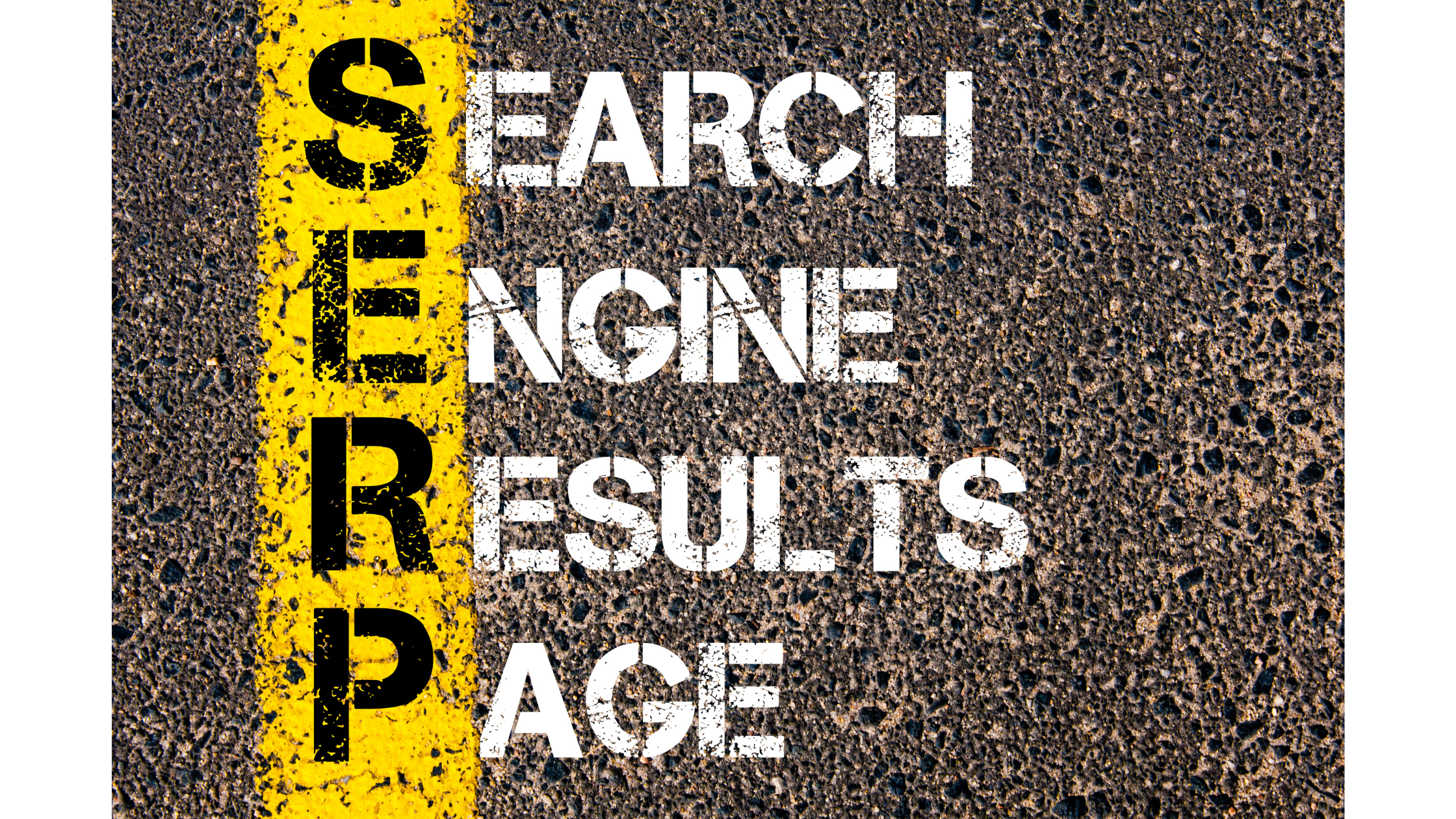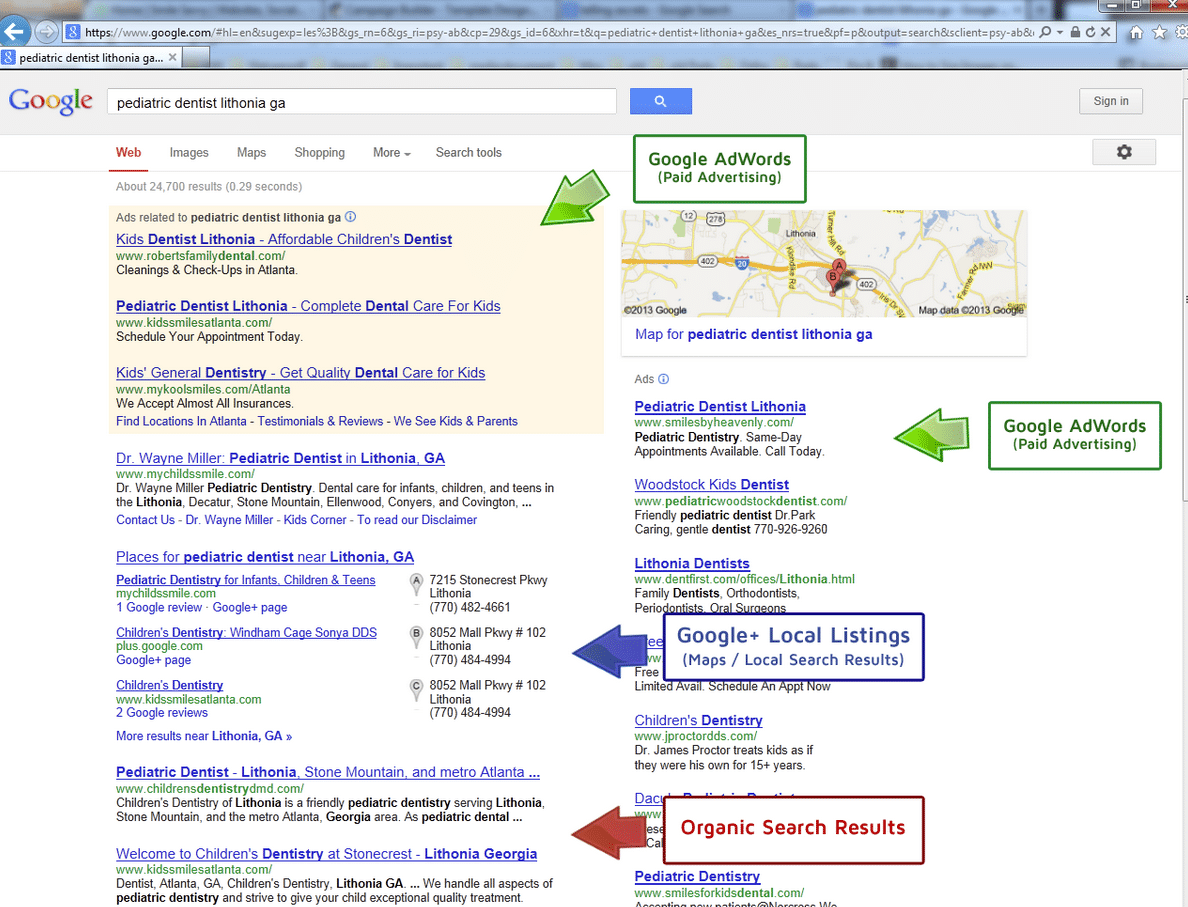In the first four parts of our series on mastering SERP elements, we’ve delved into a variety of features that can significantly impact your search engine visibility and customer engagement.
- Part 1: We started with Featured Snippets, Local Pack, and Reviews, exploring how these elements provide quick answers and local business visibility, and enhance credibility through customer feedback.
- Part 2: We moved on to Sitelinks, Video Results, Carousel Results, and Top Stories, highlighting how these features can increase site navigation, visual appeal, and content exposure.
- Part 3: We examined People Also Ask, Images, Knowledge Graph & Knowledge Card, Social Media Integration (Twitter/X), and “See Results About” and “Find Results On”, showing how these elements expand user engagement and provide comprehensive information.
- Part 4: We focused on Maps, Google Business Profile, and Destinations, discussing the importance of local search optimization and the benefits of showcasing your business location and customer experiences.
Now, in the final part of our series, we’ll delve into two crucial SERP elements: FAQ and AI Overview. These advanced SERP elements can further enhance your search presence and adapt to evolving search behaviors. Let’s explore how to effectively utilize FAQ sections and AI-driven SERP elements to stay ahead in the competitive landscape.
Importance of FAQ Sections in SERPs
FAQ (Frequently Asked Questions) sections have become increasingly prominent in search results, providing users with quick answers to common queries directly on the SERP. For lawn mower and tractor dealerships, appearing in these sections can significantly boost visibility, enhance customer engagement, and establish authority in the industry.
Benefits of Having FAQ Sections for Lawn Mower and Tractor Dealers
- Increased Visibility: FAQ sections are often highlighted in SERPs, making your content more likely to be seen by potential customers.
- Improved User Experience: By answering common questions, you can reduce customer frustration and provide immediate value.
- Authority and Trust: Providing accurate and helpful information can position your dealership as a knowledgeable and trustworthy source.
- Reduced Customer Support Load: Addressing frequently asked questions on your website can reduce the number of inquiries to your customer support team, allowing them to focus on more complex issues.
How to Create Effective FAQ Content
Identifying Common Customer Questions
To create an effective FAQ section, start by identifying the most common questions your customers ask. You can gather these questions from:
- Customer service interactions
- Sales team feedback
- Online reviews and comments
- Competitor websites
- Keyword research tools
Structuring Questions and Answers for Clarity and Conciseness
Once you have a list of common questions, structure them clearly and concisely:
- Use Simple Language: Avoid jargon and technical terms that might confuse readers.
- Be Direct: Answer the question in the first sentence, then provide additional details if necessary.
- Organize Logically: Group related questions together to make it easier for users to find the information they need.
Use of Schema Markup for FAQ
Schema markup is a form of microdata that helps search engines understand the content on your website. When applied to FAQ sections, schema markup can enhance your content’s visibility by enabling rich snippets in search results, which are more engaging and informative.
How to Implement Schema Markup for FAQs
- Identify the FAQs: Choose the questions and answers you want to mark up.
- Use a Schema Markup Generator: Tools like Google’s Structured Data Markup Helper can simplify the process.
- Add the Markup to Your HTML: Insert the generated code into the HTML of your FAQ page.
- Test Your Markup: Use Google’s Rich Results Test to ensure your markup is implemented correctly.
- Monitor Your Performance: Track how your FAQ snippets are performing in search results and adjust as necessary.
Regular Updates Based on Customer Feedback
Search engines favor content that is fresh and relevant. Regularly updating your FAQ section ensures that the information remains accurate and useful, which can improve your search rankings and user satisfaction.
Strategies for Collecting and Integrating Customer Feedback into FAQs
- Monitor Customer Interactions: Keep an eye on customer inquiries through support tickets, emails, and social media.
- Encourage Feedback: Ask customers to provide feedback on your FAQs and suggest new questions.
- Regular Reviews: Schedule periodic reviews of your FAQ content to ensure it reflects current customer concerns and industry trends.
- Data Analysis: Use analytics to identify which FAQs are most frequently viewed and where users might be dropping off, indicating a need for clearer answers or additional information.
By effectively utilizing FAQ sections, lawn mower and tractor dealers can significantly enhance their online presence, improve customer satisfaction, and streamline their support processes. In the next part of our series, we will explore the impact of AI-driven search features and how businesses can adapt to these advancements.
AI Overview
As artificial intelligence (AI) continues to evolve, its influence on search engine results pages (SERPs) is becoming increasingly significant. AI-driven SERP elements are reshaping how users interact with search engines, making it crucial for businesses to understand and leverage these advancements for optimal search optimization.
AI-driven SERP elements encompass various algorithms and technologies designed to enhance the user search experience. These include machine learning algorithms, natural language processing (NLP), and voice recognition. Understanding these SERP elements can provide businesses with a competitive edge in the market.
Benefits of Leveraging AI in Search Optimization
- Enhanced User Experience: AI helps deliver more relevant and personalized search results, improving user satisfaction.
- Improved Search Rankings: By aligning your content with AI algorithms, you can boost your website’s visibility on SERPs.
- Future-Proofing: Staying ahead of AI advancements ensures your business remains competitive as search technology evolves.
How AI Can Influence SERP Rankings
Search engines use AI algorithms to analyze vast amounts of data and deliver the most relevant results to users. Key AI technologies include:
- Machine Learning: Continuously improves search algorithms based on user behavior and feedback.
- Natural Language Processing (NLP): Understands and interprets human language to deliver more accurate results.
- RankBrain: Google’s AI system that helps process search queries and determines the most relevant results.
Examples of AI Influencing SERP Rankings
- BERT Update: Google’s BERT (Bidirectional Encoder Representations from Transformers) update improved the search engine’s understanding of complex queries, leading to more accurate search results.
- Voice Search: The rise of voice-activated assistants like Siri and Alexa has shifted how queries are processed, emphasizing the need for conversational content.
Strategies to Adapt to AI in Search
AI algorithms prioritize content that is relevant, informative, and high-quality. To meet these standards:
- Focus on User Intent: Understand what users are searching for and tailor your content to meet their needs.
- Use Structured Data: Implement schema markup to help search engines understand your content’s context.
Tips for Optimizing Content for AI-Driven Search Engines
- Keyword Optimization: Use natural language keywords and phrases that align with how people speak and search.
- Content Depth: Provide comprehensive information that thoroughly answers user queries.
- Engagement Metrics: Improve engagement metrics such as time on page and click-through rates, which AI algorithms consider in rankings.
Voice Search Optimization
Voice search is growing rapidly, with users increasingly relying on voice-activated devices for their search queries. This trend has significant implications for local SEO:
- Conversational Keywords: Optimize for longer, conversational keywords that mirror how people speak.
- Local Listings: Ensure your Google My Business profile and other local listings are accurate and up-to-date.
Techniques for Optimizing Content for Voice Search
- Answer Questions Directly: Provide clear and concise answers to common questions.
- Use Natural Language: Write content in a conversational tone that aligns with how users speak.
- Focus on Local SEO: Include local keywords and ensure your business information is optimized for local search queries.
Conversational Content
Conversational content is designed to mimic human dialogue, making it easier for AI algorithms to interpret and deliver relevant results. This type of content is particularly effective for voice search and long-tail queries.
How to Write Content That Aligns with Natural Language Processing
- Use Simple Language: Avoid jargon and complex terms that might confuse AI algorithms.
- Break Up Content: Use headings, bullet points, and short paragraphs to make your content more readable.
- Engage with Questions: Incorporate questions and answers into your content to align with how users search.
Bringing It All Together: Final Tips for Optimizing SERP Elements
Over the course of this series, we’ve delved into various advanced SERP features that can significantly impact your online visibility and search performance. From Featured Snippets and Local Packs to AI-driven search features, understanding and optimizing for these elements is crucial for staying competitive in the digital landscape.
Recap of Advanced SERP Features Covered
- Featured Snippets: Providing concise answers at the top of search results.
- Local Pack: Highlighting local businesses with map locations and contact information.
- Reviews: Leveraging user reviews to build credibility and improve rankings.
- Sitelinks: Enhancing navigation with additional links to specific pages.
- Video Results: Utilizing video content to engage users and improve visibility.
- Carousel Results: Displaying horizontal scrolling lists for products and news.
- Top Stories: Featuring news articles relevant to search queries.
- People Also Ask: Answering related questions to provide comprehensive information.
- Images: Showcasing images relevant to the search query.
- Knowledge Graph & Knowledge Card: Providing detailed information in panel form.
- Social Media Integration (Twitter/X): Featuring recent social media posts.
- See Results About & Find Results On: Offering suggestions for related topics.
- Maps: Importance of Google Maps in local searches.
- Google Business Profile: Optimizing your GBP for better visibility.
- Destinations: Highlighting store visits and customer testimonials.
- FAQ: Creating effective FAQ content and using schema markup.
- AI Overview: Adapting to AI-driven search features and optimizing for voice search and conversational content.
Final Tips
- Focus on Quality Content: Ensure your content is high-quality, relevant, and provides value to your audience.
- Optimize for Local Search: Utilize Google Maps and your Google Business Profile to capture local traffic.
- Leverage Reviews and Testimonials: Encourage satisfied customers to leave reviews and feature testimonials prominently.
- Stay Updated with SEO Trends: Continuously monitor SEO trends and AI advancements to maintain a competitive edge.
- Implement FAQ Sections: Address common customer questions with well-structured FAQ content using schema markup.
- Adapt to AI in Search: Create content that aligns with AI algorithms and optimize for voice search.
By understanding and leveraging these advanced SERP features, lawn mower and tractor dealers can enhance their online presence and attract more customers. Implementing these strategies will not only improve your search performance but also help build a strong, reputable online brand.
For personalized assistance and more insights into optimizing your online presence, reach out to our team at Dealer’s Digital Marketing. If you missed any parts of this series, we invite you to read through the entire collection for comprehensive SEO strategies that can transform your business. Stay tuned for canvamore expert tips and strategies to master your SEO efforts.
Learn about the #1 Marketing platform for lawn mower and tractor dealership’s – DealerAMP here.








